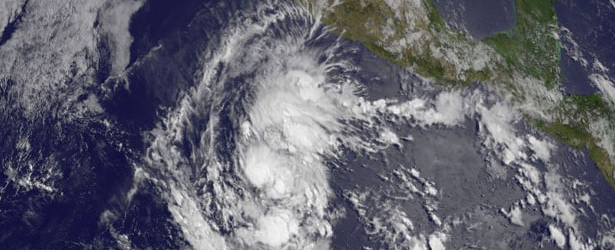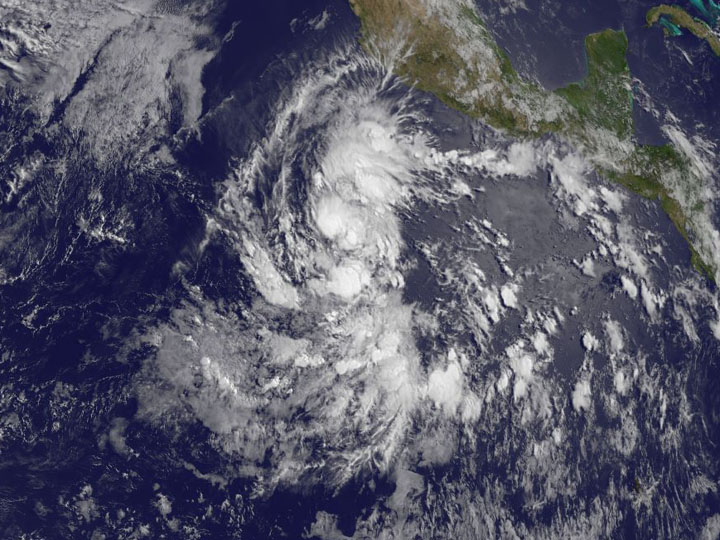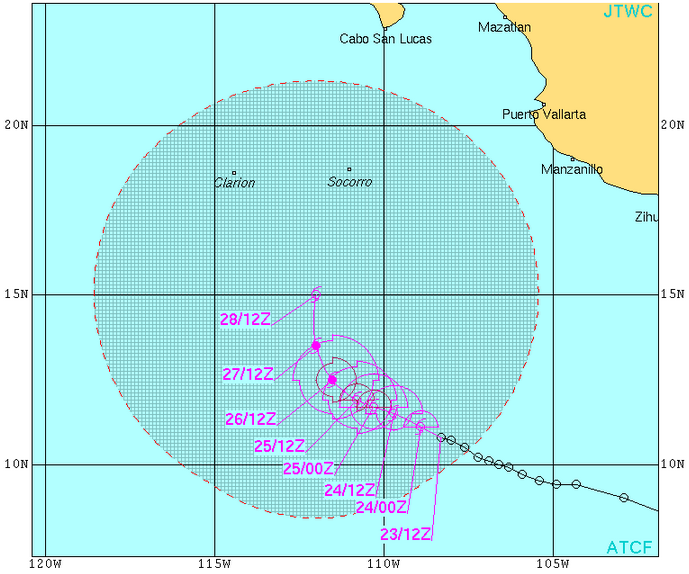“Amanda” forms as first tropical storm of 2014 Eastern Pacific hurricane season

2014 Eastern Pacific hurricane season officially started on May 15, 2014. A week later, its first tropical depression was born southwest of Mexico. On May 23rd the system organized and strengthened into the first tropical storm of the season and was named "Amanda".
At 15:00 UTC today Amanda was centered near 10.9 north latitude and 108.4 west longitude, about 1 000 km (620 miles) south-southwest of Manzanillo, Mexico, moving west-northwest at 7 km/h (5 mph). It had a minimum central pressure of 1005 millibars.
At the time, Amanda's maximum sustained winds had increased to 65 km/h (40 mph). Tropical-storm-force winds extended outward up to 55 km (35 miles) from the center.
The NHC discussion indicated that forecasters there expect Amanda to reach hurricane strength in about three or so days.

NOAA's GOES-West satellite captured this visible image of renamed Tropical Storm Amanda on May 23 at 15:00 UTC. Image credit: NASA/NOAA GOES Project

TS Amanda forecast track on May 23, 2014. Image credit: JTWC
At 22:59 UTC on May 21 the Tropical Rainfall Measuring Mission (TRMM) satellite passed over System 92E, which will later strengthen into Tropical Storm Amanda.
TRMM's Precipitation Radar (PR) data were used to create a 3-D view of System 92E's rainfall structure and revealed a few strong thunderstorms reached altitudes of 16.5 km (about 10.2 miles).
These tall thunderstorms are often a sign that a tropical cyclone is forming or strengthening. Within twenty-four hours. (Goddard)

TRMM's Precipitation Radar (PR) data were used to show a 3-D view of System 92E's rainfall structure on May 21. Image credit: SSAI/NASA/Harold Pierce

Tropical Depression 1E soon to become Tropical Storm Amanda on May 23 at 12:00 UTC, less than 12 hours after its birth in the Eastern Pacific. Image credit: NASA/NOAA GOES Project
NOAA predicts near-normal or above-normal 2014 Eastern Pacific hurricane season.
Featured image: Tropical Storm Amanda on May 23 at 15:00 UTC. Image credit: NASA/NOAA GOES Project

Commenting rules and guidelines
We value the thoughts and opinions of our readers and welcome healthy discussions on our website. In order to maintain a respectful and positive community, we ask that all commenters follow these rules:
We reserve the right to remove any comments that violate these rules. By commenting on our website, you agree to abide by these guidelines. Thank you for helping to create a positive and welcoming environment for all.